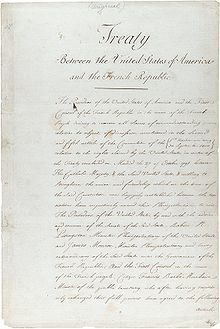So Leni Riefenstahl Kathryn Bigelow, how do you feel about Maya now that she’s been exposed not only as a bloodthirsty sadist, but a lying incompetent as well?
Meet Alfreda Bikowsky, the Senior Officer at the Center of the CIA’s Torture Scandals
By Glenn Greenwald and Peter Maass
12/19/14
NBC News yesterday called her a “key apologist” for the CIA’s torture program. A follow-up New Yorker article dubbed her “The Unidentified Queen of Torture” and in part “the model for the lead character in ‘Zero Dark Thirty.'” Yet in both articles she was anonymous.
The person described by both NBC and The New Yorker is senior CIA officer Alfreda Frances Bikowsky. Multiple news outlets have reported that as the result of a long string of significant errors and malfeasance, her competence and integrity are doubted – even by some within the agency.
…
The executive summary of the torture report released by the Senate last week provides abundant documentation that the CIA repeatedly and deliberately misled Congress about multiple aspects of its interrogation program. Yesterday, NBC News reported that one senior CIA officer in particular was responsible for many of those false claims, describing her as “a top al Qaeda expert who remains in a senior position at the CIA.”NBC, while withholding her identity, noted that the same unnamed officer “also participated in ‘enhanced interrogations’ of self-professed 9/11 mastermind Khalid Sheikh Mohammed, witnessed the waterboarding of terror suspect Abu Zubaydah and ordered the detention of a suspected terrorist who turned out to be unconnected to al Qaeda, according to the report.”
The New Yorker’s Jane Mayer, writing yesterday about the NBC article, added that the officer “is still in a position of high authority over counterterrorism at the C.I.A.” This officer, Mayer noted, is the same one who “dropped the ball when the C.I.A. was given information that might very well have prevented the 9/11 attacks; she gleefully participated in torture sessions afterward; she misinterpreted intelligence in such a way that it sent the C.I.A. on an absurd chase for Al Qaeda sleeper cells in Montana. And then she falsely told congressional overseers that the torture worked.” Mayer also wrote that the officer is “the same woman” identified in the Senate report who oversaw “the months-long rendition and gruesome interrogation of another detainee whose detention was a case of mistaken identity.”
…
The Washington Post identified Bikowsky by name, describing her as a CIA analyst “who was tied to a critical intelligence-sharing failure before the Sept. 11, 2001, attacks and the botched 2003 ‘rendition’ of an innocent German citizen thought to be an al-Qaeda operative.” That Post report led to both McClatchy and independent journalist Marcy Wheeler raising questions about the propriety of Bikowsky’s former personal lawyer, Robert Litt, playing a key role in his current capacity as a top government lawyer in deciding which parts of the torture report should be released.The McClatchy article identified Bikowsky by name as the officer who “played a central role in the bungled rendition of Khaled el-Masri. El-Masri, who was revealed to be innocent, claimed to have been tortured by the agency.” El-Masri, a German citizen who was kidnapped from Macedonia and tortured by the CIA in Afghanistan, was released in 2003 after it was revealed he was not involved in al Qaeda.
Back in 2011, John Cook, the outgoing editor of The Intercept, wrote an article at Gawker, based on the reporting of Ray Nowosielski and John Duffy, naming Bikowsky and pointing to extensive evidence showing that she “has a long (if pseudonymous) history of being associated with some of the agency’s most disastrous boondoggles,” including a key role in the CIA’s pre-9/11 failure to notify the FBI that two known al Qaeda operatives had entered the country.
Earlier that year, the Associated Press reported that a “hard-charging CIA analyst [who] had pushed the agency into one of the biggest diplomatic embarrassments of the U.S. war on terrorism” (the rendering for torture of the innocent El-Masri) was repeatedly promoted. Despite internal recommendations that she be punished, the AP reported that she instead “has risen to one of the premier jobs in the CIA’s Counterterrorism Center.”
Good German. Now roll over. Fetch. Good German.

 In April 1803, the United States purchased from France the 828,000 square miles that had formerly been French Louisiana. The area was divided into two territories: the northern half was Louisiana Territory, the largely unsettled (though home to many Indians) frontier section that was later explored by Lewis and Clark; and the southern Orleans Territory, which was populated by Europeans.
In April 1803, the United States purchased from France the 828,000 square miles that had formerly been French Louisiana. The area was divided into two territories: the northern half was Louisiana Territory, the largely unsettled (though home to many Indians) frontier section that was later explored by Lewis and Clark; and the southern Orleans Territory, which was populated by Europeans.
 Welcome to my childhood trauma. I have to be the only person in the world who doesn’t like
Welcome to my childhood trauma. I have to be the only person in the world who doesn’t like 

 Welcome to the
Welcome to the 
 With Congressional action on the Employment NonDiscrimination Act distinctly absent for the past two legislative sessions, outgoing Attorney General Eric Holder
With Congressional action on the Employment NonDiscrimination Act distinctly absent for the past two legislative sessions, outgoing Attorney General Eric Holder